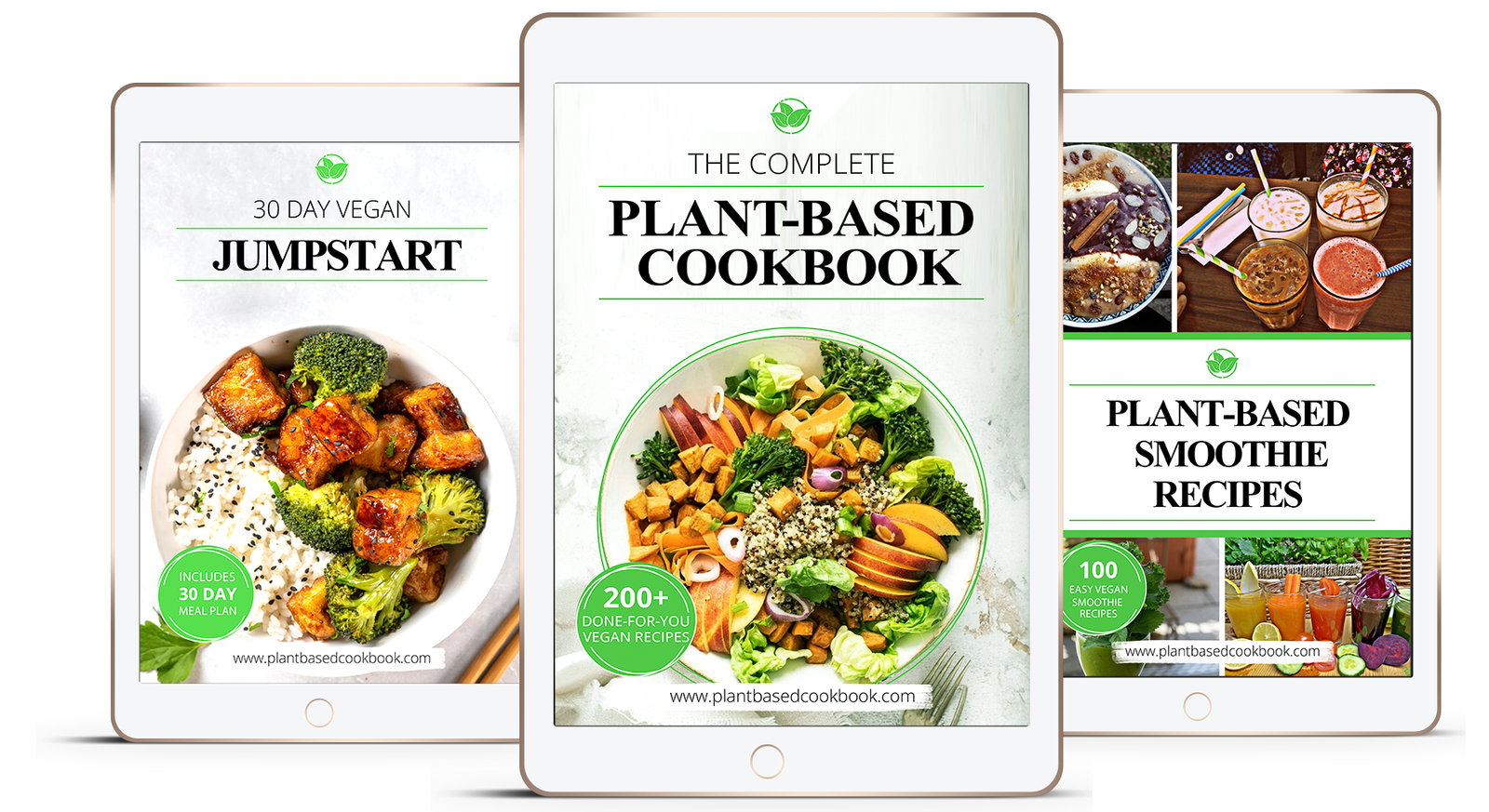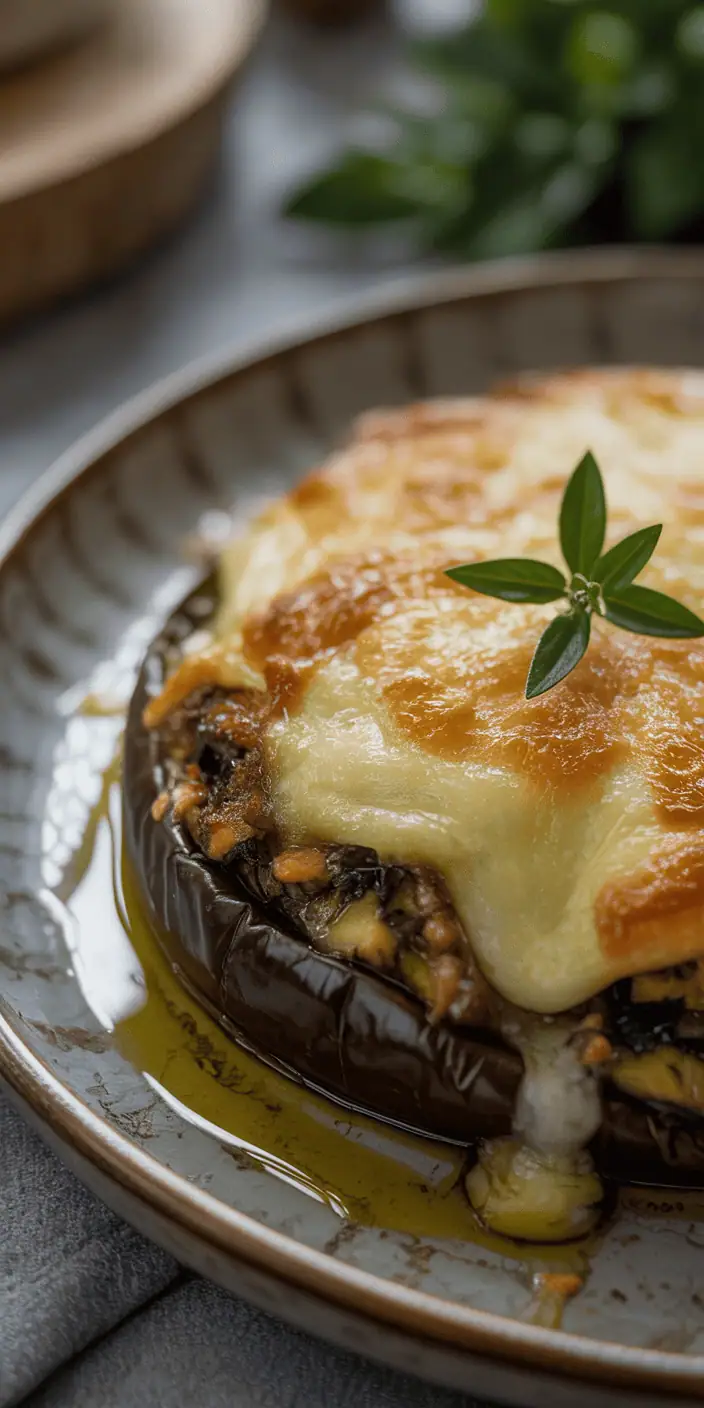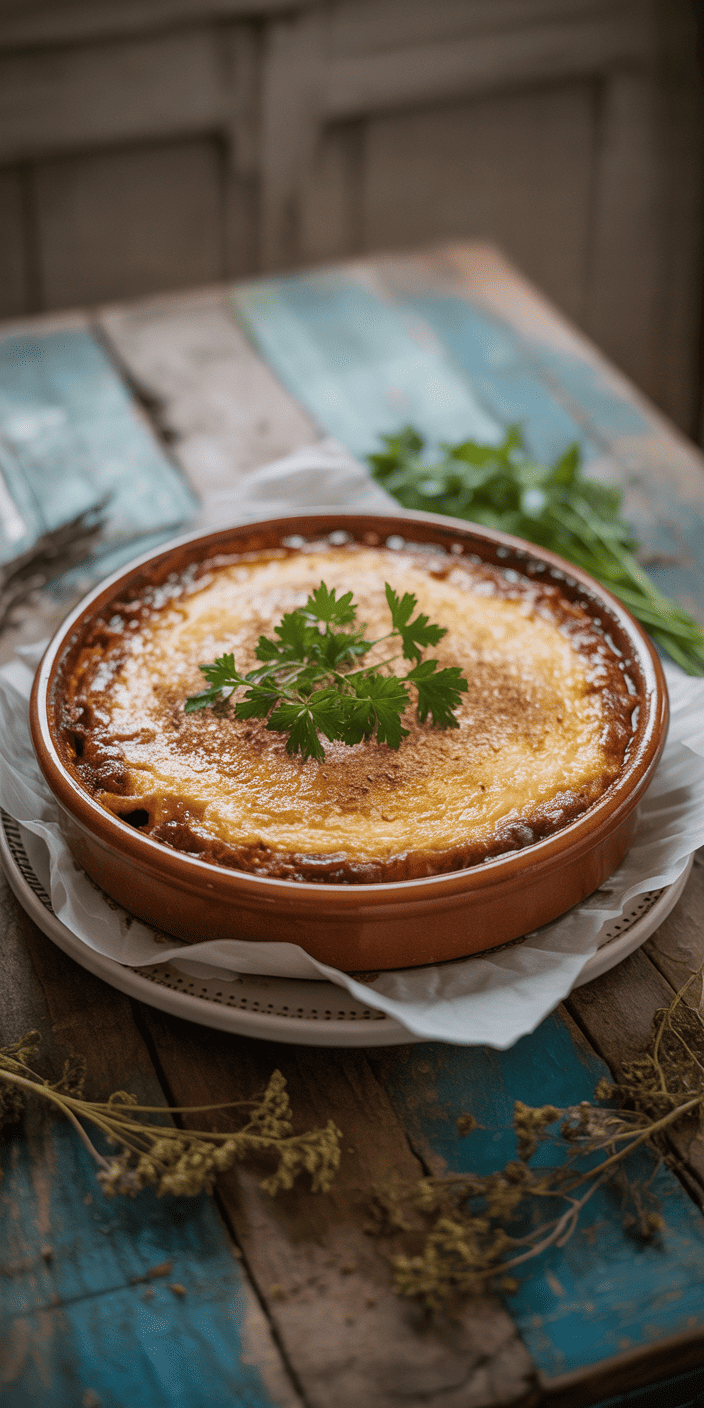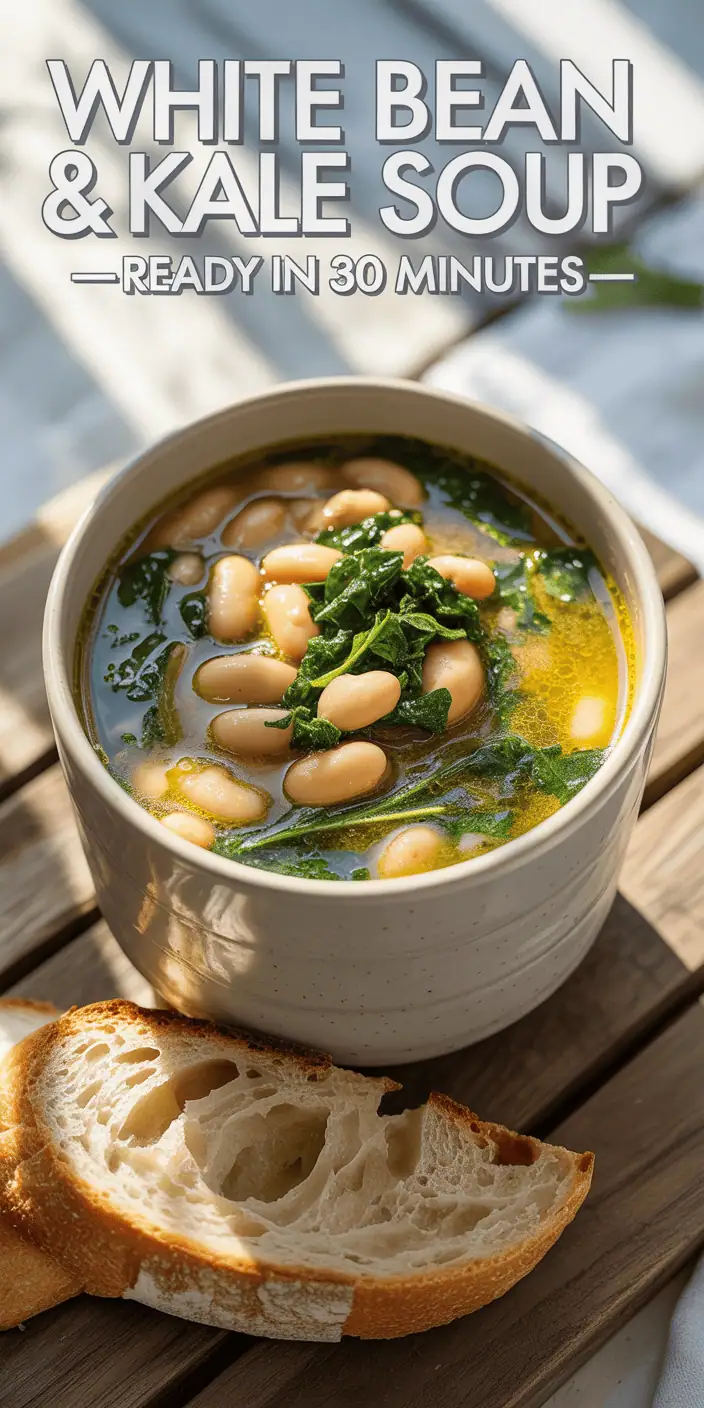(Hey! Some links in this post may be affiliate links — meaning I may earn a small commission if you buy through them, at no extra cost to you. As an Amazon Associate, I earn from qualifying purchases. I only share products I genuinely love and think you’ll find useful too. Read the full disclosure here).
Discover Mediterranean Diet Recipes For Beginners made simple! This guide shows how healthy eating can be both tasty and easy. It’s based on the Mediterranean lifestyle, using fresh veggies, herbs like oregano and basil, and heart-healthy olive oil. No complicated techniques are needed—just real food that nourishes your body.
Whether you’re new to cooking or just starting your healthy eating journey, these recipes focus on whole foods. You’ll find dishes with whole grains, fish, and nuts. Each dish emphasizes flavor through garlic, lemon, and spices, not excess salt or sugar. These meals are perfect for busy schedules, balancing nutrition and convenience.
Inside, you’ll find quick breakfasts like Greek yogurt bowls, light lunches such as quinoa salads, and dinners with grilled seafood or veggies. Tips on meal prep and avoiding common mistakes make it easier to stick to this diet. Let’s make the Mediterranean lifestyle a natural part of your daily routine!
Contents
What is the Mediterranean Diet?
The Mediterranean Diet comes from the eating habits of Greece and Italy. It focuses on whole foods and eating with care. It combines old traditions with new nutrition knowledge to help us stay healthy.
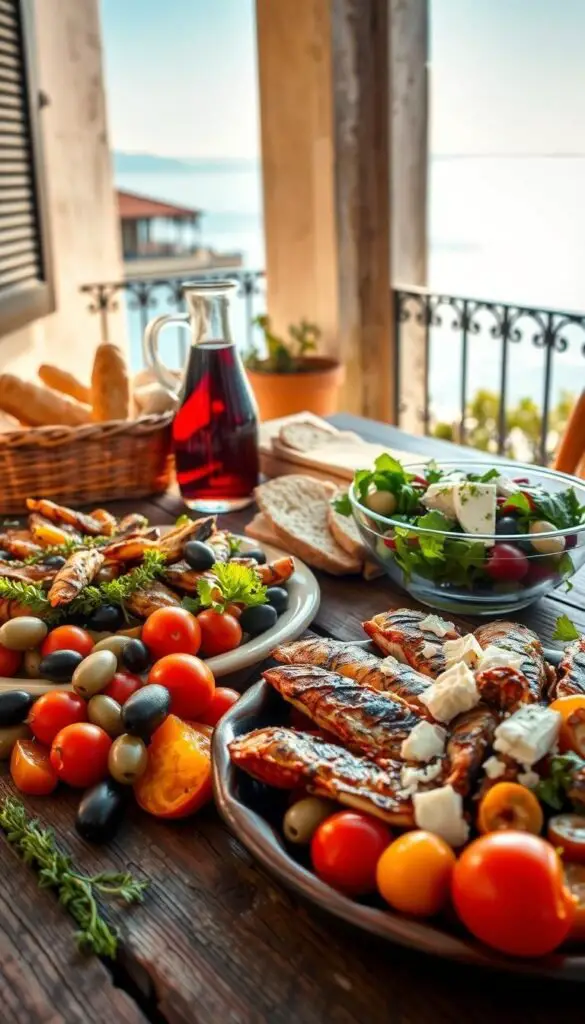
Overview of the Diet
This diet is inspired by the Mediterranean Sea’s shores. It values eating with the seasons and sharing meals with others. The Harvard T.H. Chan School of Public Health notes its rich plant-based meals, fresh seafood, and simple foods.
Key Components of Mediterranean Eating
- Abundant vegetables, fruits, and whole grains.
- Healthy fats like olive oil and nuts.
- Fish and seafood consumed 2-3 times weekly.
- Moderate portions of dairy and poultry.
Health Benefits
Research proves this diet is heart-healthy. It helps lower cholesterol and blood pressure. It also supports weight loss by keeping you full.
Studies show it reduces inflammation and lowers the risk of chronic diseases. This makes it a great choice for a healthy life.
Essential Ingredients for Mediterranean Recipes
Starting a beginner-friendly pantry is easy with the basics of Mediterranean cuisine. These ingredients make cooking simple. Stock up on these to bring out vibrant flavors easily.
Olive Oil and Vinegars
Use top-notch extra virgin olive oil for drizzling and cooking. Mix it with vinegars like balsamic or red wine for tasty dressings. Try this combo:
- Balsamic vinegar for salads
- Red wine vinegar in marinades
Fresh Herbs and Spices
Garlic, oregano, basil, and parsley are key. They add flavor without salt or fat. Dried herbs also work well—keep them in airtight containers to stay fresh.
Whole Grains and Legumes
Get farro, bulgur, and quinoa. Legumes like chickpeas and lentils add protein. Rinse and soak beans before cooking for the best texture.
With these basics, even beginners can make delicious Mediterranean dishes. No need for complicated steps. Just real ingredients for real results.
Quick Breakfast Ideas
Starting your day with Mediterranean Diet Recipes For Beginners is easier than you think. These easy recipes focus on healthy eating without sacrificing time. They’re packed with protein, fiber, and fresh flavors, making them ideal for busy mornings.
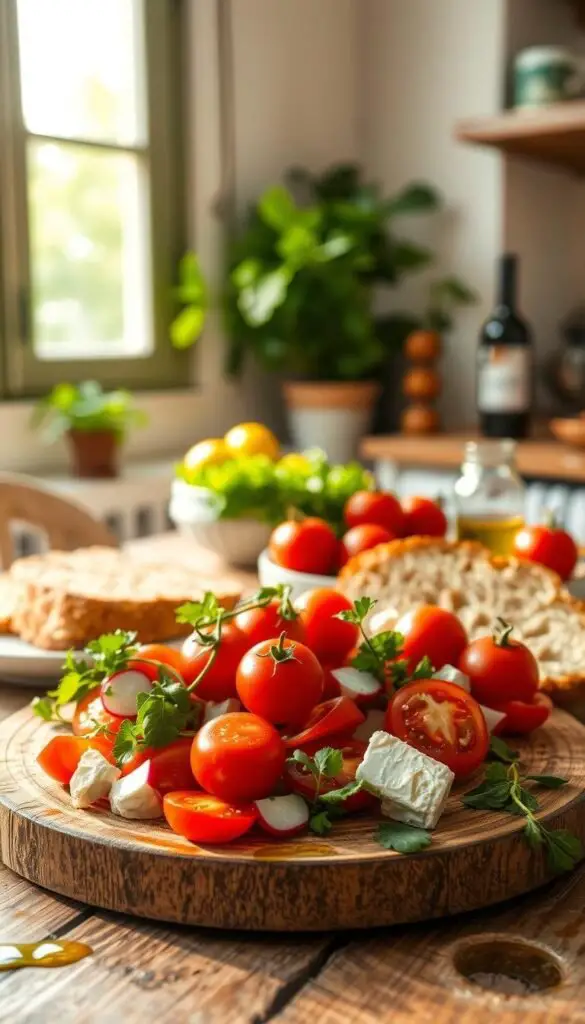
Greek Yogurt with Honey and Nuts
Mix plain Greek yogurt with honey and a sprinkle of walnuts or almonds. Add seasonal fruits like berries or sliced apples. For extra crunch, add chia seeds or granola. Pro tip: Swap honey for maple syrup for a vegan option.
Vegetable Omelet with Feta
Whisk eggs with olive oil. Sauté diced bell peppers and spinach, then fold into the omelet with crumbled feta. Cook until set. This dish uses veggies like zucchini or tomatoes too. Serve with whole-grain toast for fiber.
Overnight Oats with Fruits
Mix rolled oats, almond milk, and a teaspoon of honey in a jar. Refrigerate overnight. In the morning, top with sliced bananas, strawberries, or a handful of pistachios. Add a dash of cinnamon for warmth. Prep takes just 2 minutes the night before!
“A Mediterranean breakfast doesn’t need a gourmet kitchen—just fresh ingredients and creativity.”
Delicious Lunch Options
Looking for a quick and tasty lunch? These Mediterranean-inspired meals are perfect for busy days. They’re easy to make and packed with flavor. Whether you’re heading to work or taking a break, these dishes are a hit.
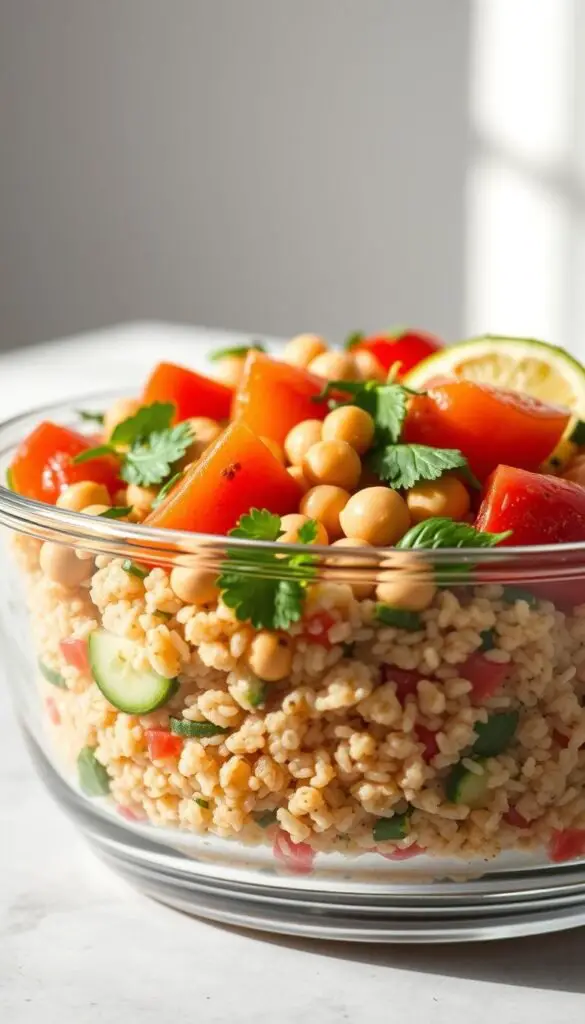
Mediterranean Quinoa Salad
This salad is a colorful mix of quinoa, cherry tomatoes, cucumbers, and Kalamata olives. Dress it with lemon-tahini sauce for a burst of flavor. Prep it on Sunday for a quick lunch all week. Let it sit overnight for even more taste.
Chickpea and Spinach Stew
For a warm, comforting lunch, try this chickpea and spinach stew. It’s made with chickpeas, spinach, garlic, and sun-dried tomatoes in a tomato broth. Store it in airtight containers for easy reheating. Add a squeeze of lemon for a fresh touch.
Pita Sandwich with Hummus and Veggies
Make your own pita sandwich with hummus, shredded carrots, cucumber slices, and red onion. Keep ingredients separate to avoid sogginess. A drizzle of balsamic glaze adds a special kick!
- Batch-cook quinoa and grains to cut prep time.
- Prep veggies Sunday for grab-and-go lunches.
- Use airtight containers to keep salads and stews fresh.
Mediterranean meals don’t have to be hard. Focus on fresh ingredients and smart prep. This way, you can enjoy exciting meals without the hassle.
Tasty Dinner Recipes
Explore Mediterranean Diet Recipes For Beginners that make dinner easy and healthy. These meals use simple cooking and fresh ingredients for great taste. You can grill, roast, or sauté, all while keeping it nutritious and simple.
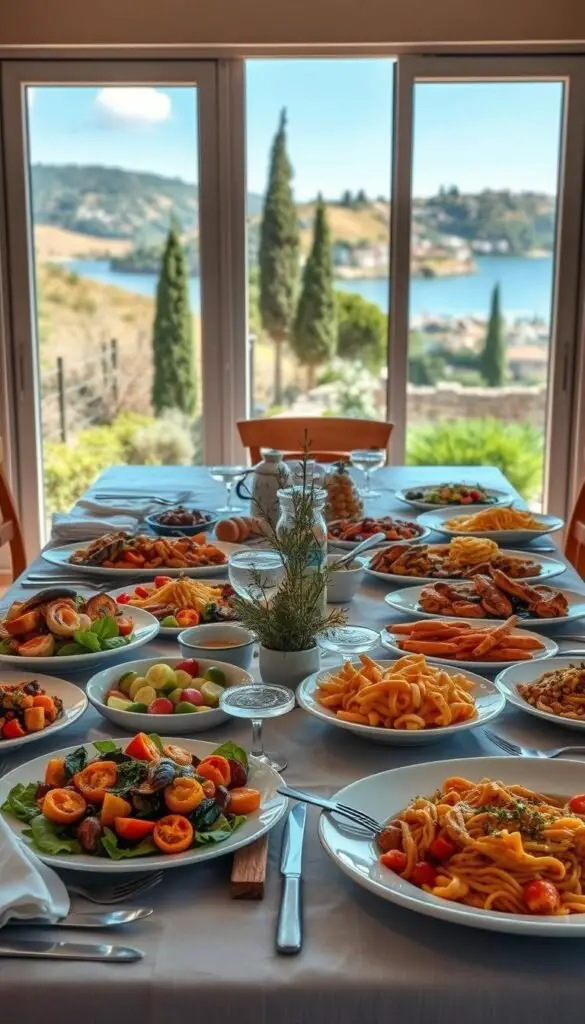
Grilled Salmon with Lemon and Herbs
Season salmon with lemon zest, garlic, and thyme. Grill for 8-10 minutes until it’s flaky. This heart-healthy dish goes well with a green salad. Try marinating the fish ahead of time for more flavor.
Chicken Souvlaki with Tzatziki
Cut chicken into cubes and mix with oregano and lemon juice. Then, skewer and grill. Serve with a refreshing simple cooking tzatziki made from yogurt, cucumber, and dill. Enjoy with pita or rice for a full meal.
Vegetable Ratatouille
Simmer eggplant, zucchini, and bell peppers in olive oil with garlic and basil. This vegetarian dish is perfect for slow-cooking flavors. Reheat it as a side or use it as a base for grain bowls. It’s great for using up seasonal veggies!
Flavorful Side Dishes
Make your Mediterranean meals pop with easy-to-make sides. These easy recipes bring out the best of Mediterranean cuisine. They’re great for beginners wanting to try new flavors. Plus, they use seasonal ingredients to keep your meals fresh and fun.
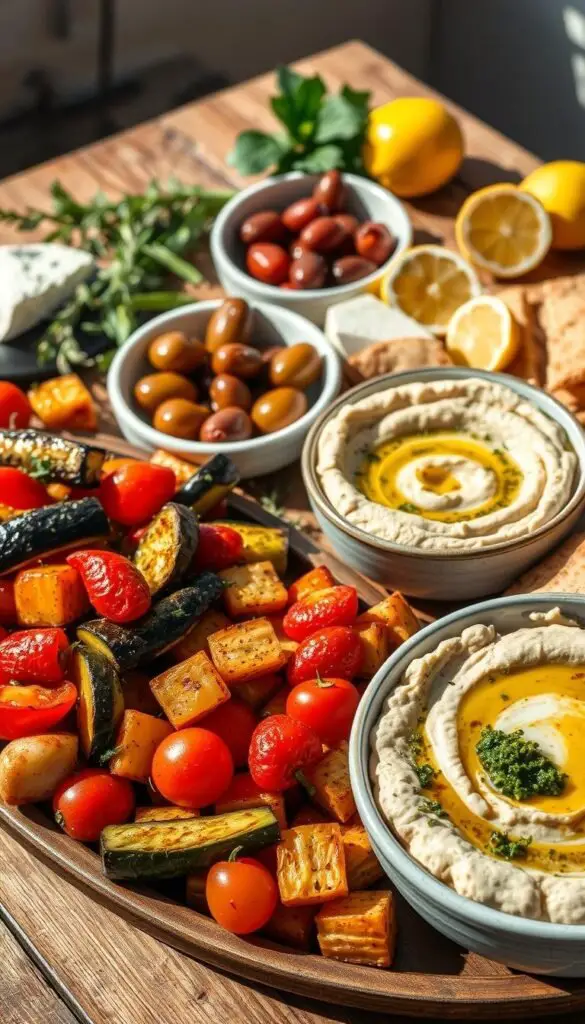
Roasted Mediterranean Vegetables
Start by chopping eggplant, zucchini, and red onions. Drizzle them with olive oil and add garlic powder, oregano, and red pepper flakes. Roast at 400°F until they’re nicely caramelized.
This method works with many veggies. Try using mushrooms or bell peppers for a change.
Tabbouleh Salad with Parsley
Begin with rinsed bulgur wheat. Add chopped parsley, mint, tomatoes, and scallions. Dress it with lemon juice and olive oil.
Let it sit for 15 minutes to blend the flavors. No cooking needed!
Stuffed Bell Peppers
First, hollow out bell peppers. Then, fill them with a mix of couscous, diced cucumber, chickpeas, and feta. Bake until they’re tender.
To make it a main dish, double the recipe. Add shredded chicken or lentils for extra protein. It’s perfect for meal prep!
“The best sides are those that let ingredients speak for themselves.”
These dishes go well with fish, chicken, or as a veggie-only plate. Feel free to swap ingredients based on what you have. This way, you can easily master Mediterranean cuisine at home.
Healthy Snacks to Enjoy
Snacking smartly is key to the Mediterranean lifestyle. It supports healthy eating habits that help with weight loss. These snacks follow the diet’s principles, adding flavor without too many calories.
Marinated Olives and Cheese
Revive store-bought olives by mixing with oregano and red pepper flakes. Serve with a 1-ounce portion of feta or manchego cheese. This mix of healthy fats and protein keeps you full for hours.
A 1/4 cup of olives plus cheese totals 150-180 calories. It’s a light yet satisfying option.
Fresh Fruit with Almonds
Pair seasonal fruit like apple slices with almond butter or a handful of raspberries and 10 raw almonds. The fiber and healthy fats slow digestion, preventing overeating later.
An apple with 10 almonds offers 180 calories and steady energy.
Whole-Grain Avocado Toast
Mash avocado onto whole-grain bread, top with cherry tomatoes and a drizzle of olive oil. Sprinkle with chili flakes for heat. This 300-calorie snack blends fiber and healthy fats, fitting seamlessly into a Mediterranean approach.
Adjust toppings to match cravings without guilt.
Tips for Meal Prep
Meal planning makes Mediterranean eating easy, even for beginners. Start with a beginner-friendly plan to save time and reduce stress. These steps make following Mediterranean Diet Recipes For Beginners a breeze.
Planning Your Week Efficiently
Begin by choosing 3-4 recipes each week. Pick dishes like stuffed bell peppers or quinoa salads that use similar ingredients. Make a shopping list, grouping items by store sections.
For example, pair grilled salmon with roasted veggies for two meals. This cuts prep time in half.
Batch Cooking Strategies
- Roast a tray of zucchini, eggplant, and red onion for salads, sides, or soups.
- Cook bulgur or farro in bulk; store in airtight containers for quick grain bowls.
- Blend a large batch of hummus—use it in pita wraps, as a dip, or salad topper.
Storage Solutions for Freshness
Keep herbs like parsley and basil fresh by storing them in water-filled jars, covered with a plastic bag. Freeze olive oil-marinated olives or chopped veggies for later use. Use glass containers with labels to track expiration dates. Airtight bags work well for cooked grains.
Common Mistakes to Avoid
Starting with Mediterranean Diet Recipes For Beginners is exciting. But, small mistakes can slow down your weight loss or healthy eating goals. Here’s how to stay on track:
Overlooking Portion Sizes
Even olive oil and nuts are high in calories. Use a teaspoon for drizzling oil, and measure nuts by the handful—not the bag. Pair proteins like salmon or chicken with smaller sides to balance meals.
Ignoring Ingredient Quality
Low-quality olive oil or wilted veggies won’t deliver the diet’s full benefits. Choose fresh produce and extra-virgin olive oil. Frozen veggies are okay too—just check labels for no added sugars.
Skipping Variety in Meals
Eating the same salad daily? Mix it up! Try these swaps: spinach → arugula, chickpeas → cannellini beans, or lemon → orange for dressings. Variety keeps meals exciting and nutrients balanced.
Remember: Small adjustments matter. These tips turn challenges into habits that support long-term healthy eating. Adjust, adapt, and enjoy the journey!
Conclusion: Embrace the Mediterranean Lifestyle
Starting a Mediterranean diet isn’t about strict rules. It’s about making small changes that fit your life. Each recipe in this guide is a starting point, not the end.
Small steps like swapping one meal a day or trying new herbs can make a big difference over time.
Incorporating Recipes into Daily Life
Start by replacing one meal a week with a Mediterranean option. Try using olive oil instead of butter when cooking. Add spinach to omelets for a heart-healthy twist.
These small changes support your heart health without changing your routine too much. Even quick breakfasts like yogurt with nuts or overnight oats can fit this lifestyle.
Making It Work for You
Make recipes your own by adapting them to your taste. Use ingredients you’re familiar with, like quinoa or chickpeas. Vegetarians can enjoy legumes, while meat-eaters can try grilled fish or chicken.
This diet is flexible and works with most dietary preferences, from vegan to gluten-free.
Final Thoughts on Healthy Eating
Choosing Mediterranean-inspired meals is more than just losing weight. It’s a journey to long-term wellness. Studies show it lowers heart disease risk and helps with weight management.
Celebrate your progress, not perfection. Visit local farmers’ markets for fresh produce. Try herbs like oregano or basil to add flavor naturally. Every meal is a chance to nourish your body and enjoy good food.


